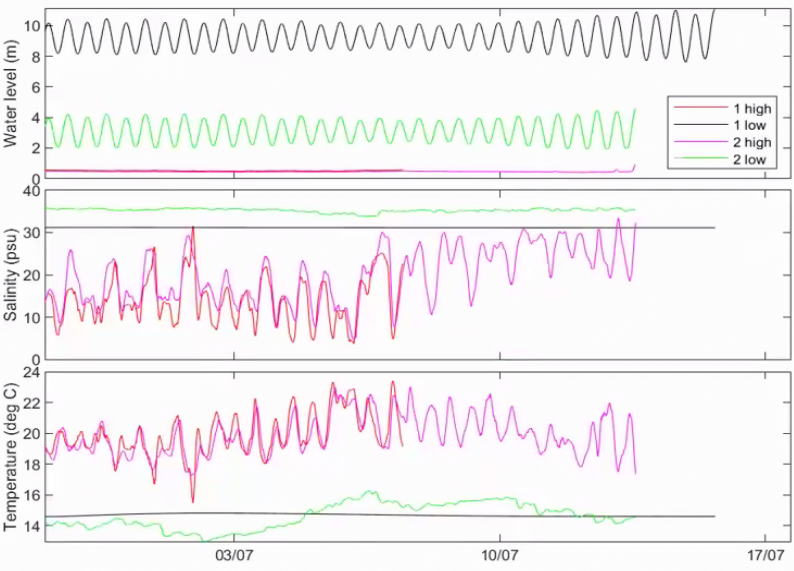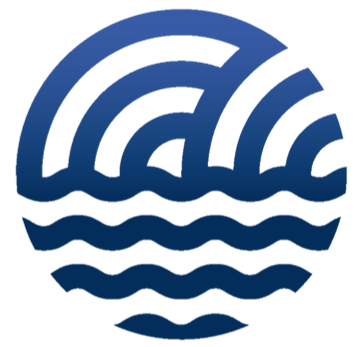Text
Type of resources
Available actions
Topics
INSPIRE themes
Provided by
Years
Formats
Update frequencies
status
-

Both the short-term and long-term campaigns were performed during summer and winter conditions, meaning respectively a low and high river discharge. The short-term campaigns were carried out from a boat during spring tide, anticipating that normally at highest tidal range the highest flow velocities occur. Flow velocity was measured using an Acoustic Doppler Current Profiler (ADCP).
-
After the installation and launch of the Bubble Barrier system at the end of 2023, the litter collected in the catchment system was evaluated monthly from January to December 2024. More details on the results can be found in D5.4.
-
The tracking platform for marine litter data mining and sharing is conceived as an APP and a PORTAL for infield organization and testing of marine litter tracking, monitoring and clean up activities. The tracking platform is structured in three main services: Marine litter monitoring service; Marine Litter Clean up service; Marine Litter tracking service. In the framework of the MAELSTROM Project, several activities were performed to achieve the implementations of the Software portal and MAELSTROM app developed for the tracking of marine litter. MAELSTROM Portal works as an open and shared repository of data collected during the MAELSTROM project waste removal activities. The MAELSTROM app was developed as front end for project operators, allowing insertion of images and data of waste picked during clean-ups. The Project Deliverable 6.1 (restricted) summarises the activities performed to achieve the implementations of the Software portal and MAELSTROM app developed for the tracking of marine litter. Here attached a case study.
-
An acoustic survey was carried out on 11 November 2024 to measure the noise impact of the Bubble Barrier technology in the Ave River estuary. This analysis, initially not foreseen by the project, was introduced to provide some preliminary background information on the possible impact from noise pollution on aquatic species. A recently calibrated ICListen high-frequency hydrophone was used to provide absolute measures of biotic, abiotic and anthropogenic sound levels to draw meaningful comparisons of habitats through time and at different locations. The survey encompasses the sampling at three different locations at the margin of the estuary (piers), the first one at the centre river-side of the Bubble Barrier pier, second on the corner of a small pier near the end of the Bubble Barrier, 285 m from the centre of the Bubble Barrier pier, and the last one at the end of a yacht pier, 628 m from the centre of the Bubble Barrier pier. The hydrophone was lowered into the water tied to a line and placed about 50 cm above the estuary bottom for recording. Recordings of at least 5 minutes were taken with the Bubble Barrier switched off and on at all piers and during the start of the Bubble Barrier at Pier 1. For the comparison of conditions with the Bubble Barrier switched on and off, recorded minutes without exceptional noise events were selected to represent base noisescapes. More details on the methodology can be found in D5.4
-
In the Ave River estuary, monitoring of Floating Macro-Litter (FML) was undertaken before (June 2021 - December 2023) and after the installation of the Bubble Barrier remediation technology in order to assess its effectiveness. Evaluation of FML followed standard European guidelines (Hanke et al., 2013, 2023) and was conducted through visual monitoring to assess the diversity and relative abundance of debris in the area. Monitoring campaigns were carried out monthly from June 2021 to December 2024. FML observations were performed using binoculars (during ebb tide at three designated locations in the estuary—downstream, midstream, and upstream. All three observation points were positioned at the same elevation along the estuary margin, approximately 2 meters above the water surface (mean sea level), ensuring a consistent viewing angle for reliable comparisons between locations. Although some FML objects may have been partially obscured by wind-generated ripples or small waves from passing boats, this impact was minimized as observations were conducted on calm days with high visibility. More details on the methodology can be found in D5.4 More details on the results can be found in D2.4.
-

Both the short-term and long-term campaigns were performed during summer and winter conditions, meaning respectively a low and high river discharge. For the long-term campaigns, instruments were deployed for several weeks: CTD and ADCP.
-
The ecological assessment of the Ave Estuary has been conducted since the beginning of the MAELSTROM project, covering the Spring and Autumn periods each year (seasons with the highest biological activity for this type of water body). After the installation of the Bubble Barrier, ecological assessments were carried out seasonally to monitor the ecosystem's progression following the implementation of the waste collection technology. More details on the results can be found in D2.3.
-
Within the H2020 project MAELSTROM, we carried out field observations at an existing Bubble Barrier in Amsterdam, the Netherlands. Results of this study are to be used later in the MAELSTROM project to design the Bubble Barrier system that is planned to be deployed in one of the pilot sites, in a Portuguese estuary. The present work corresponds to MAELSTROM deliverable 4.1 (confidential). The objective of this study was to obtain insight in the working capacity of the Bubble Barrier in a real life operational setting both in terms of litter removal and energy consumption. To reach this objective, several observations have been carried out simultaneously during three days with the goal to determine a relation between (vertical) flow distribution in the waterway and performance, both in terms of plastic removal and energy usage of the Bubble Barrier.
-
In the framework of the MAELSTROM Project, several activities were performed to achieve the implementations of the Software portal and MAELSTROM app developed for the tracking of marine litter: The Marine Litter Monitoring Campaign in Italy 1. St. Pietro in Volta beach 2. Portosecco beach 3. The Island of Lazzaretto Nuovo in Venice 4. The Island of Pellestrina The Marine Litter Monitoring Campaign in Portugal 5. The Cabedelo Beach The Marine Litter Clean Up operated with the MAELSTROM app 6, The island of Madonna del Monte 7. The island of Saint Erasmo 8. The island of Bacan 9. The beach of Portosecco in the island of Pellestrina The Marine Litter Clean Up Campaign in Venice (Italy) 10. The island of Lazzaretto Nuovo 11. The Island of Madonna del Monte clean up 12. The island of Saint Erasmo clean up 13. The island of Bacan clean up (I) 14. The island of Bacan clean up (II) The Marine Litter Clean up campaign in Portugal 15. Castelo do Queijo beach Clean up (18/09/2021) The activities performed to test the services (Marine litter monitoring activities, Marine Litter Clean up activities and Marine Litter tracking) implemented through the Maelstrom App and Portal are described in the Deliverable 6.1 (restricted).
 CNR-ISMAR
CNR-ISMAR